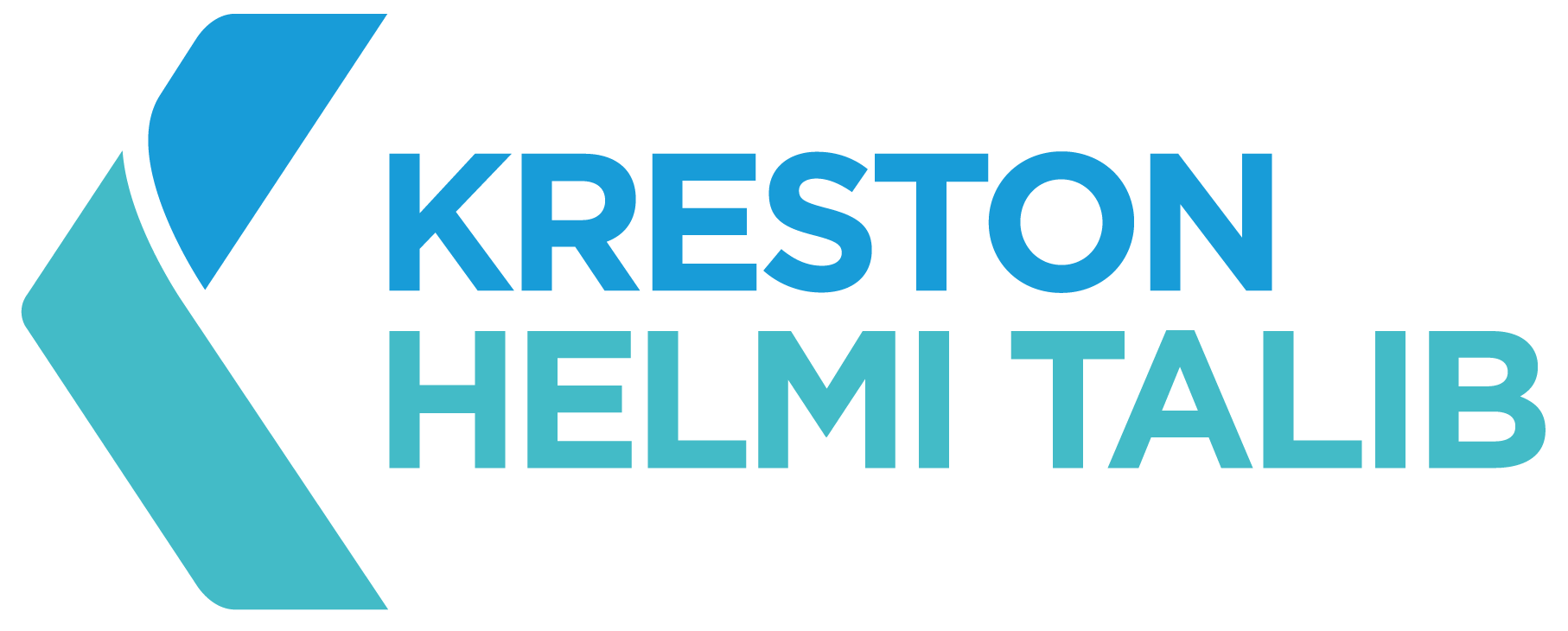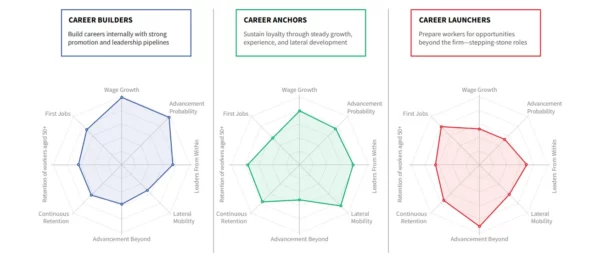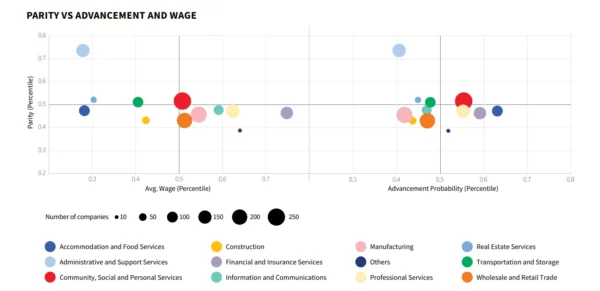
Singapore Opportunity Index: Driving Real Workforce Progress in Singapore and Beyond
For years, particularly in the Accounting industry, attracting and retaining talent has always been a challenge for most, if not all, firms. Singapore Opportunity Index (SOI), recently developed in partnership with Singapore's Ministry of Manpower, the Burning Glass Institute, and the Singapore University of Social Sciences, aims to delve deep into the factors that drives employee satisfaction and provide data-driven insights that can aid both employees and employers alike in their pursuit for progress.

The index looks at five broad dimensions measured through underlying metrics and draws basis from employment records of nearly one million residents employed in almost 1,500 firms in Singapore. Employers are scored through these metrics, and the outcome provides data-driven insights from both employee and employer perspectives on the type of opportunities that can really progress into a career and how progression outcomes within organisations yield a long-term competitive edge to attract and retain talent.
Here are summarised findings from the report to aid organisations and the workforce in choosing or deciding on an opportunity for long-term growth and career stability.
The Findings
-
Employers Shape Outcomes
SOI ranked companies into quintiles. Based on the data, employees from top-quintile companies are 2.2 times most likely to stay past the first year, are paid 3.4 times higher and on average have an 86% chance of receiving a higher wage at their next job.
-
Neither Size nor Industry Determines the Outcomes
Data shows that employer size does not appear to be a key factor for progress. Both medium/large companies show a wide range of SOI scores, suggesting that progress is not directly attributed to size. A part of the report quotes:"
This suggests that the ability to create opportunity is not simply a function of scale: while one would expect larger firms to have greater capacity and resources to invest in talent development and management systems, this advantage does not automatically translate into better career outcomes.
Smaller firms can perform just as strongly as the largest employers through effective strategy and practices. For employers, the takeaway is that how resources are deployed and managed, matters more than the absolute scale of those resources in shaping career opportunity."
Source: Singapore Opportunity Index | Insight Report
Setting the Context: Foundational Insights (Key Finding 2: Neither Industry nor Size is Destiny)In connection to this, high SOI scores can be attributed across industries signifying that no specific industry offers better opportunity for progress over the other. The report showcases strategies distinct to top-performing firms across sizes and industries.

Source: Singapore Opportunity Index | Insight Report
Figure 4. Visualizing Success: The Distinct Strategies of Top-Performing Firms -
Hiring for Skills over Degrees is not Always the Solution
While prioritising skills over degree is powerful strategy to tap on more talents, it doe not often guarantee retention and progress. The index shows that only 22% succeeded in achieving high early retention and 45% struggle with low retention where new hires onboarded depart more quickly.
The findings suggest that while removing degree requirements can get more talents to be onboarded, it takes more robust process, frameowrk and development opportunities for them to stay and progress.
-
First Jobs Must Lead to Second Steps
The challenge to retain is more prevalent when hiring first-time workers. From the companies in the index who hires a number of new entrants, only 52% were able to retain these hires past the first years. The index' analysis offers a valuable insight:
"A first job is almost always a stepping stone. Unless a company provides a clear “second step”—through visible opportunities for learning,growth, and advancement—that stepping stone will simply lead to a role at another firm."
Source: Singapore Opportunity Index | Insight Report
Setting the Context: Foundational Insights (Key Finding 4: First Jobs Must Lead to Second Steps)
-
There's No One-Size-Fits-All Strategy to Drive Real Progress
The index showcases different strategies implemented by top-quintile companies. On the contrary, common combinations can be observed amongst high SOI scorers. They are as follow:
* Internal Champions
Strength in traditional promotion pathways, with high advancement probability, leaders from within, and solid wage growth.
* Lateral Movers
Firms leveraging lateral moves to broaden employee skillsets, pairing rotation with moderate promotion rates and steady wage gains.
* External Launchers
Companies whose alumni advance rapidly in the broader labour market, showing that investment in training pays dividends even when talent departs.
-
Career Trajectories Take on Many Forms
Career progress can be vertical, lateral, or external. High-performing companies in the index showed three common progression models as observed amongst top-ranking companies and as already briefly mentioned above.
* Internal Champions Model
In this model, companies focus on internal advancement, particularly, wage growth and promotions, that enable employees to gain more experience and move up internally showcases better performance and score. This is directly tied up to an increase in retention and decrease in operating costs that normally arise when onboarding external hires.
* Lateral Mobility
While this strategy shows no direct link to wage growth. It signifies positive connections to retention. Lateral moves allow employees to build on new skills that strengthen their long-term career durability.
* External Launchers
Companies may lose talent and score low on retention on this model. But on average, companies under this, score high on average SOI. This suggests that as they train employees well enough to succeed elsewhere, they create a positive spillover effect that counts to an employee's overall progress and growth.
-
Growth is Tied with Fairness
Equality and gender disparity has been a long-standing topic for debate across industries. Based from index data, companies that offer median average wage often observed almost a proportional score in advancement probability percentile. This suggests that fairness and strong talent progress comes together.
 Source: Singapore Opportunity Index | Insight Report
Source: Singapore Opportunity Index | Insight Report
Figure 8. Gender Parity vs. Wages and Advancement by Industry -
Pay isn't Always the Key to Stability
While compensation is one key factors that drive attraction and retention, data from the index shows that the influence of pay weakens over time. Insights from the index shows:
"Increases in pay alone show only a weak connection to long‑term retention, far less than the impact of strong onboarding, clear internal career paths, or cultures that reward expertise. Put simply: competitive money sets the stage for stability, but lasting loyalty comes from design—not paychecks."
Source: Singapore Opportunity Index | Insight Report
Setting the Context: Foundational Insights (Key Finding 8: Pay is Important—but it Doesn’t Always buy Stability) -
Advancement with Merit can Translate to Stability
A fast-paced career advancement, particularly those that employees perceived to be unearned or inequitable can also endanger retention and progress. Through the data, firms with strong retention nurture loyalty through clear, transparent, and fair career paths. Leaders are trained from within and their peers witness the growth curve, often being inspired by the process.
-
Experience Influence Stability
Index data shows that companies who hire both older workers and who develop leaders from within are 55% more likely to achieve overall high retention over other firms on the contrary. This suggests that when experienced, tenured employees stay, juniors see career stability, mid-talent invests more, and internal leadership pipelines grow organically.
More data-driven insights can be derived from the index report: Singapore Opportunity Index | Insight Report . The index will also soon release a list of employers in Singapore to recognise their commitment to improving workforce outcomes and creating opportunities for their employees.
Guided by these findings, we are always on the lookout for measures and strategies that are employee-centric.
We recognise that driving real growth and stability is now shaped by varying motivations and goals brought about by the changing workforce. There's no one-size-fits-all strategy in retaining talents and nurturing them for growth beyond the Firm. We stick to the core of our mission for our people:
"Empowering people and developing capabilities and motivation to build a high-performing team, sharing common values and objectives."
It is our goal to continuously find ways and platforms for our team to challenge their potential, capabilities, and skills, to be always on the move for growth and learning, all while creating opportunities for respect, optimism, diversity, and ethics to thrive and where a culture of belongingness where no one is left behind, is deeply embedded in the way we work.
Join us on this journey. Follow us in our social media pages :
Linkedin: https://www.linkedin.com/company/krestonhelmitalib
Facebook: https://www.facebook.com/krestonhelmitalib
Instagram: https://www.instagram.com/krestonhelmitalib
TikTok: https://www.tiktok.com/@krestonhelmitalib
YouTube: https://www.youtube.com/@KrestonHelmiTalib



